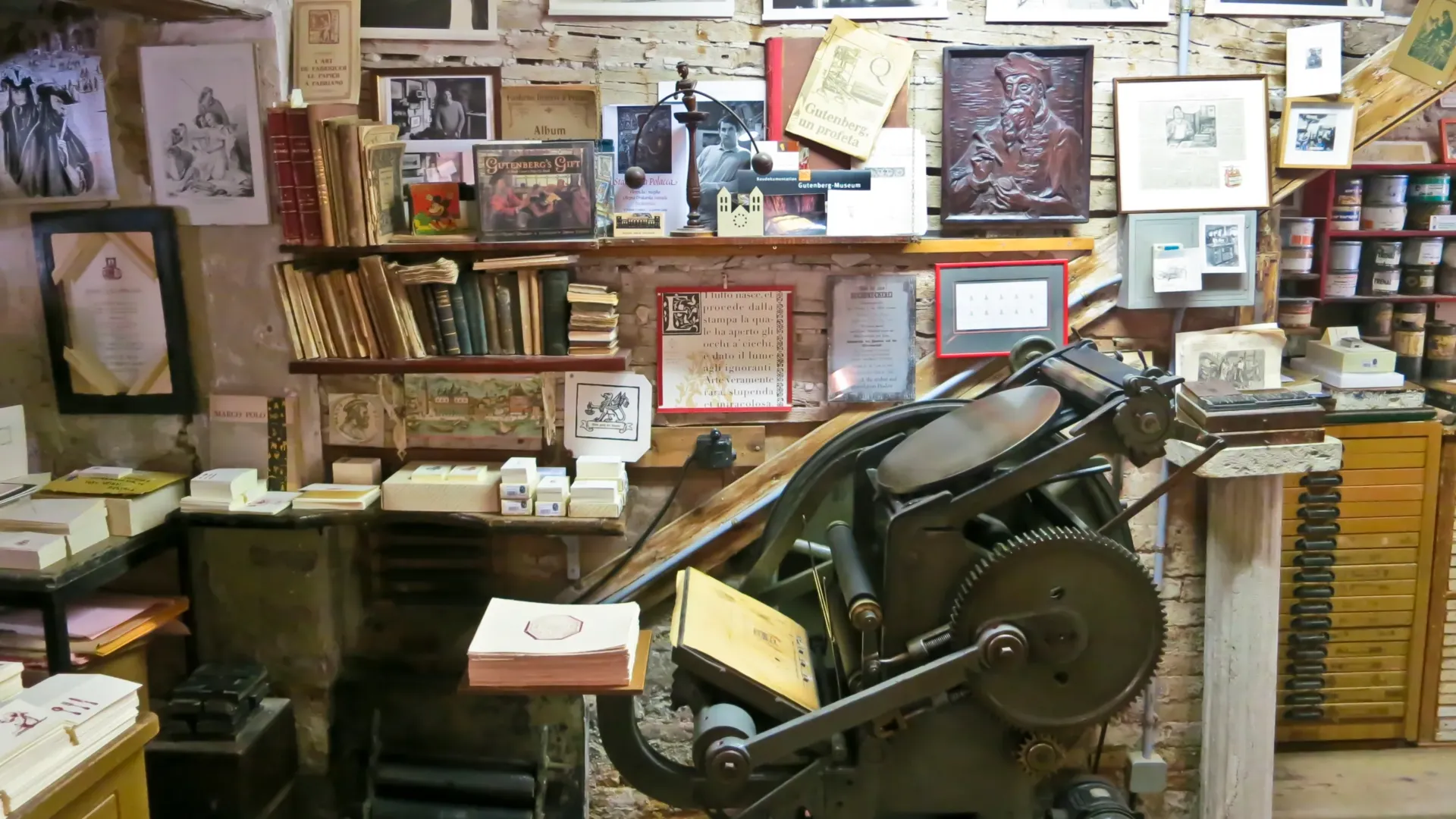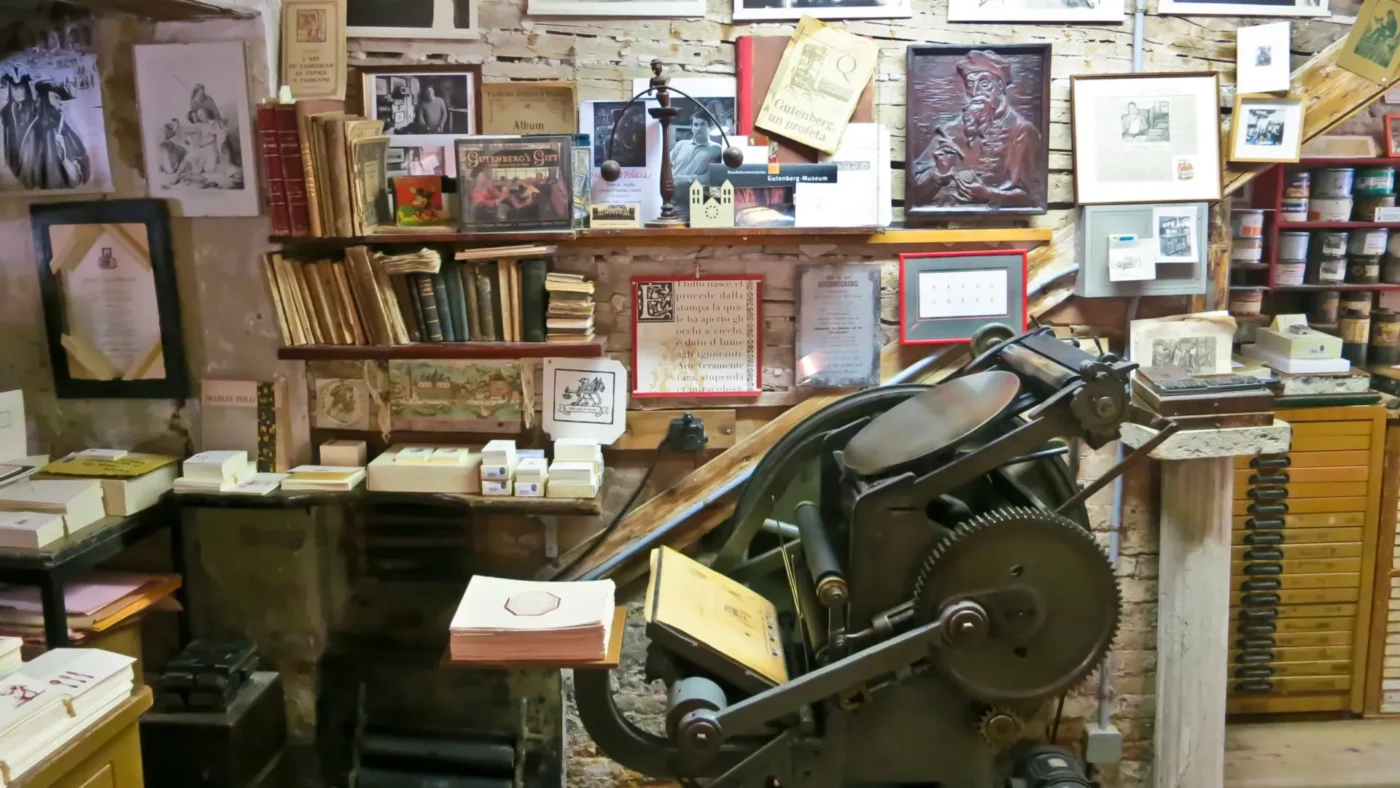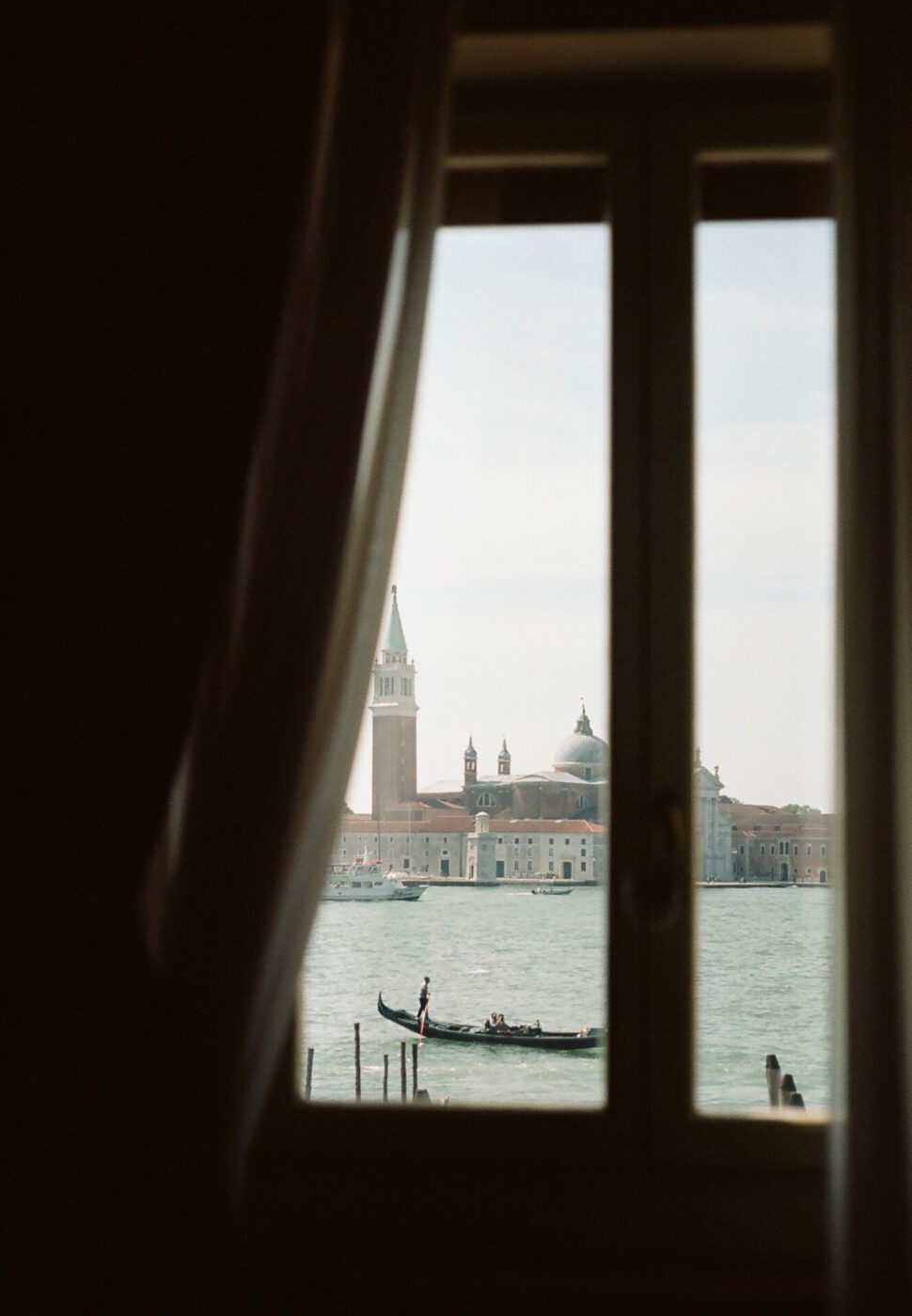Visit Venice and you’ll be hard pushed not to notice the multitude of crafts the city has to offer, not to mention the attractive architecture and fine paintings and churches (and gold!). There are the graceful gondolas, traditionally built and repaired in Zattere. There are gilded masks, marbled paper, leather goods and rainbow-coloured blown glass from nearby Murano, all festooning the windows of the tiny boutiques that line the Venetian calle. Thanks to its aquatic connection to the rest of the world, Venice has always been a hub for craftsmanship, and a historically important craft, though lesser-known today, is printmaking.
It may seem hard to believe today, but Venice was once the centre of the printing trade. The printing press came over from Germany–soon after its invention by Johannes Gutenberg in the city of Mainz in the mid-15th century–and proved to be hugely popular in the cosmopolitan city.
Venice had a fairly tolerant attitude to modernity. It was the leading city of a Republic, which meant that the area was governed more democratically than most of Italy, which was dotted with autocratic kingdoms and lordships. Venice was also fairly wealthy, thanks to its trade industry and, as a result, was a lot more receptive to different cultures and ideas than other parts of Europe at the time. Further, the Republic wanted to distance itself from the Pope down in Rome, which perhaps explains why the government was so pro printing press; the Catholic Church could try all they liked to censor printed content in the northeastern city, but the revolutionary Republic was so powerful that the Church had a very hard time doing so.
Relative press freedom led to a cultural boom, and Venice’s location (with easy access to the Adriatic and beyond), as well as its wealth and plentiful supply of raw materials, made it a favourable location for circulation. Books could all of a sudden be made more cheaply and easily and were therefore more accessible: until then, books were only really available to the clergy and aristocracy.
Venetian printer Aldus Manutius (who founded the Aldine Press in 1494) is credited with the idea of personal reading as he was the first to print small, portable pocket books (like modern-day paperbacks), which got the public reading Greek and Latin classics. To keep the books affordable, they were printed in italics–a typeface Manutius created–to save space and hence ink and paper.
It’s estimated that in the 16th century, at least 25,000 editions of books were printed, transforming Venice into the de-facto nucleus of Europe’s burgeoning publishing industry. Intellectuals and scholars flooded to the city, and books began to be published in Greek, Armenian, Arabic, German and Hebrew.

Gianni Basso Stampatore
I must have been about five years old, on one of my first holidays to Italy, when I first came across Venetian printing. It was a warm May afternoon when my family and I stumbled off the tourist trail and into the quieter, local parts of the pretty city. Leaving Piazza San Marco and the crowds behind, we headed directly north–more or less as far as we could go before reaching the lagoon. It was there that we came across Gianni Basso Stampatore. It made such an impression on little me that I’ve been back several times since: once with only a paper map, so finding the print shop–as the October mists came down like a blanket across the lagoon–became an almost impossible feat. It’s located midway down a dark, overhung alleyway at the top of the Castello area of Venice. If you keep on going to the top of the calle, you’ll come out at the Fondamenta Nove and know you’ve gone too far.
It may be tricky to find, but a visit to Gianni’s print shop is certainly worth it. Ornately-decorated, crisply-printed cards line the bare brick walls; images of sea creatures, wild animals and flowers showcase Gianni’s printing techniques. The strangely homely smell of printing ink wafts through the shop–perhaps from the pots of deep black-, red- and blue-coloured inks perched on a shelf above the printing machines. You can even see the stamps lined up like school kids, waiting to be used. At the height of printing’s popularity, “there were 550 printers in Venice using traditional methods,” Gianni tells me when I call him for a chat. “Now there’s only one and it’s me!” he exclaims.
It was “the Armenians” who taught Gianni his craft: traditional, manual printing. A group of Christian Armenian monks came over to Venice in the 16th century to escape persecution, ending up on an island which had once been a leper colony and which eventually became known as San Lazzaro degli Armeni. The island became their home, they built a monastery, made a garden and set up a printing press. The Armenians’ printing press was very important to the Republic and in some senses, it remains so today: their monks printed the bible, as well as other books, in a large number of languages (including Armenian, of course) and having their own printing press meant that they could print whatever they liked. Some years after the arrival of the printing press on the island of San Lazzaro, the poet Lord Byron took an interest in the group, crossing the lagoon to learn Armenian with the monks and taking it upon himself to help them produce an Armenian–English grammar book. It was on that island, with the monks, centuries after the famous poet did, that Gianni learnt traditional printing techniques. As an apprentice to the monks, he watched how their presses worked and in time set up his own shop using only manual methods of printing.
To enter Gianni’s dimly-lit shop is to feel as if you’re going back to another age. Gianni is traditional in his printing as well as in his attitudes to modern technology… “No computer!” he laughs before adding “you need human contact.” It’s true, much of the charm lies in going into the shop, talking through your order and actually seeing how all the machines work, how the different typefaces, emblems and beautiful muted colours are all pressed into thick, expensive-looking cards. Orders are sent out worldwide, but it’s best to visit if you can; for to be amongst the inks and the printing machines and to see for yourself Venice’s history of craftsmanship still working away (and to wander around the Venetian backstreets to get there) is really pretty magical.


